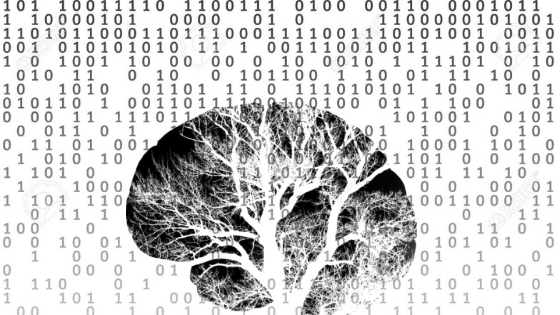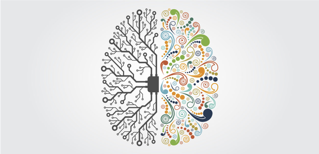Intuition in the OmniScience Artificial Intelligence Project
On that summer night of 2031, there was a dilemma the Lab was living.
In the hands of Ahmad Adraim, a routing decision in the development of the Artificial Intelligence Project, The Omniscience-AI was at a crucial stage. Omniscience had established itself as one of the great Artificial Intelligence software on the market. Not only did it equip specialized search engines on the Internet, it also led to the differentiation of healthcare companies, the financial market, political support, and in almost all sectors of smart cities.
Omniscience connected to everything on the network: connected things, mobile devices, connected cities, cars, homes, hospitals, virtual objects — and devoured the data on a daunting Big Data infrastructure with lots of predictive analytics and model manipulation of behavior, to name a few.
The city halls themselves informed the population that their programs were driven by this or that AI software, and Omniscience was one of the companies that had extensive penetration in the management of so-called Smart Cities.
Ahmad needed to decide whether or not to introduce an erratic decision-making component into the Omniscience engine. It might seem strange to anyone who does not know the stage of development of the industry, but had reached a level of knowledge, value added, correlation of events and cause and effect relationships with the content itself on the Web. It seemed that a great success in small or medium-sized projects, living with a relatively smaller set of influence variables was counterbalanced by failures in super complex projects with very heterogeneous disciplines.
It was not understood because it seems that the human beings at the front of mega-projects with them were equipped with a smaller knowledge base, but they used a certain subjectivity, or preferable, a certain intuition, that ended up often presenting a victory over competitors of intelligence of the latest generation. Ahmad Adraim was instructed to give his team as soon as possible, guidance on an enhancement option—one more—from the Omniscience artificial intelligence engine, which would probably make it the biggest brain (a very old-fashioned analogy that Ahmad wore) from the planet in the segment.
On the other hand, his alternative innovation team, which contained researchers outside the mainstream, the Hippies-Geeks, as he referred to them, or simply, the HIGS. They proposed an innovation in the opposite direction, an introduction to the model of erratic paths, decision flows that defied the found premises, changes in root cause weights that introduced a small chaos into the Omniscience deduction mechanism. In short, the HIGS proposal introduced an error or a calculated bug, in a software-winning architecture, a leading artificial intelligence framework. A very risky option.
Denying the HIGS proposal left Ahmad had thrown a flea at his ear. He knew that in a certain moment either the market would consolidate; or some new competitor – a challenger would appear and take part of the market of the traditional AI leaders.
Ahmad read and reread the proposal — under which circumstances the erratic mechanism would be added, in what flows, in what phases, to what results. The Omniscience results were not univocal. That is, it allowed some range of recommendations, for example—aggressive or innovative, or otherwise conservative or via best practices. HIGS were proposing an alternative or innovation to the already innovative recommendation, where a certain risk was usually matched by greater gains—such as in a financial portfolio. The alternative would suggest an insight of innovation, as after all it would be peculiar to a group like that.
While preserving the traditional recommendations, Ahmad knew how the company would be exploited negatively if well-known companies and individuals using Omniscience through certification of their innovative recommendations would result in a large number of failures.
It was an impasse.
Doing nothing and moving to the improvement of the current engine would be more of the same, at a time of some excessive maturity in the development cycle of AR in the market, and Ahmad sensed that he was exactly a turning point, and his many years of industry gave an alert for the need for a more forceful change. On the other hand, the HIGS proposal was not a de facto intuition, though it made the state of the art technology present to mimic an intuitive decision.
At this point, Ahmad had an insight, or perhaps an intuition, he smiled thinking.
Ahmad recalled a discussion in the group of applied philosophy in his post-graduation, where most understood that intuition is more effective (if it can be called that) when it occurs in groups of great experience. In other words, intuition in naive or inexperienced people resulted mostly in failure. Ahmad had a side that did not believe so much in this, for he had already seen brilliant insights or intuitions from surprising sources.

In fact, what he had thought was something really simple, compared to all the intelligence proposed in that change, but that could make a difference. What if the models pointed to the HIGS solution as “de facto” intuitive? That is, the intuition born in a powerful mind, as he believed it to be Omniscience-AI.
Omniscience predictive models had all statistical frameworks for test groups, simulations, and random introductions of multiple external variables, so the “intuitive” strand would have a kind of protective shield that would make the “intuitive” dimension persist until the generation of results, but equipping the set of results with the traditional deductions of the knowledge engine. It was a subtle change in AI’s engine mechanism, but it seemed to Ahmad that it allowed honesty with what he understood to be a knowledge-supported intuition.
Thus, the groups would finish the project, which would finally be implemented, not only with a cold introduction of the statistical variable in a certain phase of the artificial intelligence model, but producing their coexistence with the model, influencing and being influenced, while preserving the idea as a “protective shield” until the final recommendations.
Ahmad Adraim understood that he had a referral for the next day, but he spent some more time wondering if — in a way, this was how the very experienced human minds — in all their simplicity — dealt with a process of insight, of an intuition.
Main Imagem from “Geralt” at Pixabay.com